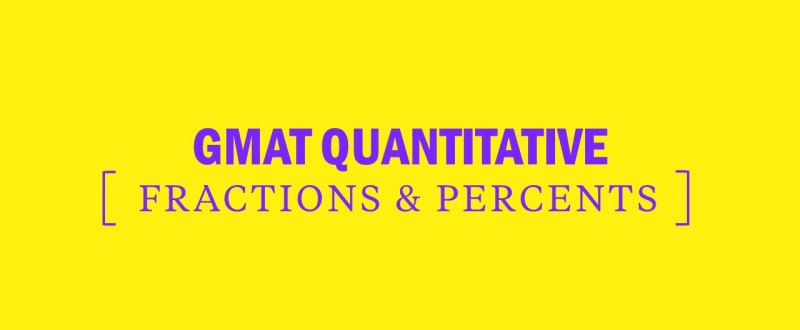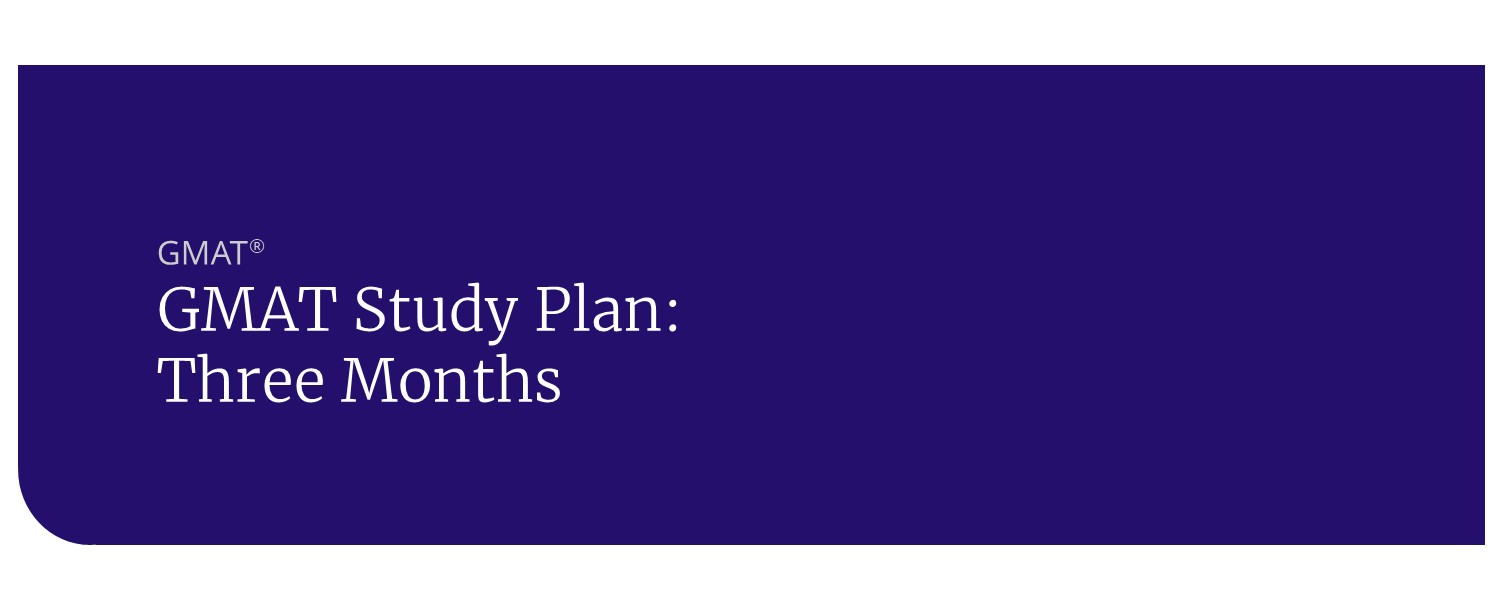GMAT Quantitative: Distance and Rate Practice
This type of GMAT test question sounds like the beginning of a joke but leaves most students groaning in front of their computers: “A train leaves the station at 4:53am going east at 60mph. A second train….” These word problems are often long, confusingly worded, and just plain boring. The intimidation factor comes from not knowing how to set up the algebra. Let’s look at two must-know formulas that will help boost your test prep confidence.
The first important formula to memorize is: D = R x T. This stands for Distance = Rate x Time. It is perfectly acceptable to also think of it as Time = Distance / Rate or as Rate = Distance / Time. Usually the “Rate” is speed but it could be anything “per” anything. In a word problem, if you see the word “per” you know this is a question involving rates.
The second formula is: Average Rate = Total Distance / Total Time. This is its own special concept and you will notice that it is NOT an Average of the Speeds (which would be something like the Sum of the Speeds / the Number of Different Speeds or what we know as the Arithmetic Mean). Average Rate is a completely different concept, so do not let the common word “average” confuse you. Let’s look at several practice question:
Practice Question 1
I got in my car and drove 40 miles to see my cousin and was going 20 mph. It took me 2 hours to get there. Then, I left my cousin’s and drove another 30 miles to the store but this time went 10mph. It took me 3 hours to arrive at the store. What was my “Average Speed” for the whole trip?
Answer
Average Speed = Total Distance / Total Time. I traveled 40 miles + 30 miles so my Total Distance was 70 miles. I drove for 2 hours + 3 hours so my Total Time was 5 hours. 70/5 = 14. My Average Speed for the whole trip was 14 mph.
The Average Speed in this problem is 14 mph, which is different from the “Average of the Speeds.” If we had just averaged the two speeds (10mph and 20mph) we would have gotten 15mph. Think of Average Speed as a weighted average. I spent more time in the problem going 10mph than 20mph, so it makes sense that the Average Speed would be closer to 10mph. Be careful because the “Average of the Speeds” will often be a tempting wrong answer choice!
Let’s try another one that will require us to use both the “Average Rate” formula and the “DIRT” formula.
Practice Question 2
Marion spent all day on a sightseeing trip in Tuscany. First she boarded the bus which went 15mph through a 30 mile section of the countryside. The bus then stopped for lunch in Florence before continuing on a 3 hour tour of the city’s sights at speed of 10mph. Finally, the bus left the city and drove 40 miles straight back to the hotel. Marion arrived back at her hotel exactly 2 hours after leaving Florence. What was the bus’s average rate for the entire journey?
Answer
To find the “Average Rate” of the bus, we know we will need to find the Total Distance and the Total Time, so let’s see how we can use the D = R x T formula to find the missing info.
For the first part of the trip, we know that 30 miles = 15mph x T, so we know that T = 2 hours. For the middle part of the trip, we know that D = 10mph x 3 hours, so we know that D = 30 miles. For the last part of the trip, we know that 40 miles = R x 2 hours, so we know that R = 20mph.
Now we can find the Total Distance and the Total Time. Total Distance = 30 miles + 30 miles + 40miles = 100 miles. Total Time = 2 hours + 3 hours + 2 hours = 7 hours.
So the Average Rate = 100 miles/ 7 hours = 14.28mph.
Practice Question 3
Tracey ran to the top of a steep hill at an average pace of 6 miles per hour. She took the exact same trail back down. To her relief, the descent was much faster; her average speed rose to 14 miles per hour. If the entire run took Tracey exactly one hour to complete and she did not make any stops, how many miles is the trail one way?
Answer
For the way up the hill, we know that D = 6mph x T.
For the way down the hill, we know that D = 14mph x T. Since we went know that the distance up the hill was the same as the distance down the hill, we can pick a number for D. Let’s choose “84” since it is a multiple of both 6 and 14. If 84 = 6mph x T, then we know that T = 14 hours. If 84 = 14mph x T, then we know that T = 6 hours.
Now we can use another formula, the Average Rate formula, to find the average speed for the WHOLE trip. Average Rate = Total Distance / Total Time
Using our Picked Number of 84, we know that the Total Distance traveled would be 168 miles. The Total Time is 14 hours + 6 hours = 20 hours. So the Average Rate = 168 miles / 20 hours = 8.4 mph.
It doesn’t matter that Tracey didn’t “really” go 168 miles, or that we know she didn’t “really” go 20 hours. We Picked a Number just so that we could find the ratio of the Total Distance to the Total Time in order to calculate the Average Rate of the ENTIRE journey.
Now that we have found the Average Rate for the whole trip, we can plug it in to the “DIRT” formula to find the ACTUAL distance for the entire journey.
D = R x T
D = 8.4mph x 1 hour
We know that T = 1 hour because the problem told us so. Therefore, the actual distance for the entire trip was 8.4 miles. The problem asks how many miles the trail was one way. 8.4 / 2 = 4.2. The answer to the question is 4.2 miles.
You could also solve this problem in other ways, including using a system of equations and substitution, but it’s nice to know that you can pick a number for the Distance traveled and use it to find the Average Rate for the whole journey! Be on the lookout for those trips where the distance there and back is the same!
We’ve joked about it, but let’s actually try one of those “train” questions:
Practice Question 4
A train runs over a straight route from town A to town D. It is scheduled to depart town A at 7am and arrive at town D at 2pm, with 10 minute stops in towns B and C. The train’s top speed is 60mph. The entire length of the route is 320 miles. Will the train arrive on time?
(1) The train experiences a 30 minute delay in town B in addition to its scheduled stop.
(2) The train travels at its top speed for exactly 75% of the trip.
Answer
This is a yes/no data sufficiency. In order to answer yes or no, we need to know the time it takes the train to make its journey. From the question, we can see that the train is supposed to take 7 hours to go from Town A to Town D with two 10-minute stops. Thus, the total travel-time of the train is 7 hours – 20 minutes = 6 hours, 40 minutes, or 6.67 hours. A train that takes the full 6.67 hours to travel 320 miles would need to travel at a speed of approx 48mph or faster to make its timetable. Remember that this is what the train is supposed to do. Let’s see how each statement affects the time-table.
With a 30 minute delay, the train’s travel-time is now 6 hours, 10 minutes, or 6.167 hours. With that delay, the train needs to travel at approx 51mph to make its timetable. However, what is missing from this statement is proof that the train actually did increase its speed to make its timetable. Just because it was possible the train arrived on time, doesn’t mean it did. Statement (1) is insufficient.
Let’s look at Statement (2). 75% of the trip is 240 miles out of the total 320 miles. This means the train has to travel the remaining 80 miles in a little less than 3 hours, an average speed of approximately 25 miles an hour in order to make the timetable. This is clearly within the train’s limits, but we do not know anything about the train’s speed for these remaining 80 miles. Statement (2) is insufficient.
Combining the two statements, we know that the train only has 2 hours and 10 minutes to travel the remaining 80 miles. This requires traveling almost 40 mph. This is possible, but we have no certainty that the train accomplished this. The answer, therefore, is (E).





